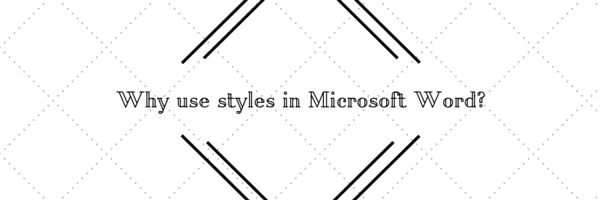

Word offers multiple sets of standard Styles already poised and ready for you in the toolbar. It’s a one-step way to apply multiple formatting settings for consistency throughout your document. For example, you can easily designate a style called “Heading 1” which formats all of your first-level headings in a particular font, single-spaced, and centered. Styles are a simple way to apply pre-set formatting definitions to blocks of text. Thank goodness for Word’s Styles feature. Add in the need to format that document and you may find you’d rather hit your head against a wall rather than continue to mess with formatting. It takes what can seem like years to put together a legal document. Of course, if you still need or want to print a copy of the document for review, you can do so with or without the redlines. With the tool active, modifications show as suggestions you can approve or reject instead of immediately taking effect. The track changes feature enables you and those around you to make changes to your documents for review. The days of circulating a paper copy for review are over.
#Using styles in word full
Word comes preloaded with some great basic features for lawyers who spend full days scrutinizing and composing legal documents. Microsoft Office for Lawyers: The Powerhouse Tool


Quote – 9 point Calibri with 12 points following, centred.Subtitle – 18 point bold Calibri with 18 points following, centred.Title – 24 point bold Calibri with 24 points following, centred.Heading 2 – 14 point Calibri with 12 points following, left aligned.Heading 1 – 18 point Calibri with 24 points following, left aligned.Normal – 11 point Calibri with 6 points between paragraphs, left aligned.When you open a document, you may see a list of set styles such as:Įach of these styles has a different look. These may be paragraph styles (which apply to a whole paragraph) or character styles (which apply to characters within a paragraph).
#Using styles in word software
If you are writing your document in Microsoft Word or Google Docs, the software provides a set of basic styles. If you have styled the whole document as Normal text and then applied bold, italics and so on to indicate headings, the designer will need to guess the correct level for each heading, and errors can creep in.

Using styles also helps if the document is being sent to a designer – the designer will use the styles to format the document accurately into the heading levels you want.
#Using styles in word update
This is time-consuming, prone to error and inconsistency, and difficult to update throughout the document. The space before and after a heading also gives important visual navigational cues to readers (eg to ensure that it is clear what text the heading belongs to, the space after a heading should not be larger than the space before it).ĭo not format documents manually by highlighting each content type and using toolbars to set the font size and attributes (eg bold, left aligned). For example, headings are usually larger than paragraph text. When you are writing a document, each content type (eg heading, paragraph, text box) has a different look. Formatting your document using styles and templates helps you to develop a logical structure and layout.


 0 kommentar(er)
0 kommentar(er)
